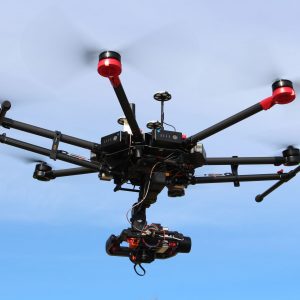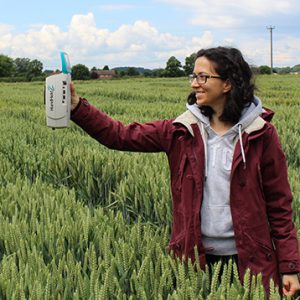What is Remote Sensing?
Remote sensing is defined as interpreting information about an area or object without being in direct physical contact with it. For earth observation, airborne remote sensing provides us with a wealth of useful information unobtainable solely from ground-based platforms. Sensors are critical to environmental and land research, touching everything from agriculture to pollution control. Capturing the field of view with exceptional precision is the objective of any spectral sensor.
Remote sensors fall into two general categories: active and passive. Both involve the measurement of reflected or emitted energy across specific portions of the electromagnetic spectrum. This spectrum defines the continuous range of electromagnetic radiation from high-frequency/short wavelength gamma rays to low-frequency/long wavelength radio waves. Major discrete regions of the electromagnetic spectrum include gamma rays, x-rays, ultraviolet, visible light, infrared, microwaves, and radio waves.
Active sensors produce their own source of energy that is projected, reflected, and detected. Most active sensors operate in the microwave portion of the electromagnetic spectrum and can penetrate the atmosphere and detect surface variations under any solar or atmospheric conditions. Passive sensors utilize naturally occurring solar radiation or thermal energy to produce measurable electromagnetic wavelengths that are reflected, transmitted, absorbed or emitted by the target’s surface. Passive measurements can be detected by spectrometers, which measure the distribution of reflected radiation intensity at specific wavelengths of a known material, or by imaging spectrometers, which measure the spectral distribution of reflected radiation at each pixel in an image of a scene.

For ground truthing remote sensing work, the combination of airborne hyperspectral imaging with ground-based instruments like the ASD FieldSpec 4 and ASD FieldSpec Handheld 2 spectroradiometers represents an optimal solution. The calibration of airborne hyperspectral data collection is important to remove the effects of atmospheric conditions that can otherwise lead to inaccurate spectral image data interpretation.

With the underlying molecular structure of an object dictating the distribution of its reflectance and absorption features, the resulting spectral signature serves as a unique fingerprint in the identification its surface composition. The process of identifying and correlating known spectral signatures is at the core of the science of remote sensing. Understanding what the spectral information a single pixel represents provides the basis for understanding all pixels with the same spectral signature. Accurate classification of that signature is essential for effective remote sensing image interpretation because it serves the purpose of converting a detailed photograph into a wealth of spectral information.
Furthermore, the amount and quality of information available within that pixel is entirely dependent on the characteristics of the sensor acquiring the data. Sensors with medium to low resolution, for example, may provide data adequate for regional and large-scale assessment. But large pixels produce spectral signatures that represent a mixing of many independent variables, rendering the image unreliable for most detailed land use or other thematic classification requirements. Sub-meter resolution is preferred when more accurate ground assessment is needed.
Hyperspectral sensors collect data in 200 to 900 narrow spectral bands. The adjacent nature of these bands provides a continuous spectral measurement across the electromagnetic spectrum and therefore is more sensitive to subtle variations in reflected energy. Images produced from hyperspectral sensors contain much more data than images from multispectral sensors and have a greater potential to detect subtle variations between features on the ground. While multispectral can be used to map forested areas, hyperspectral can be used to map tree species within the forest or identify disease conditions on those trees.
Remote Sensing Applications
Remote sensing is used for a variety of applications and industries. To learn more about some of the specific solutions our remote sensing systems provide, click the buttons below to find out more.
Remote Sensing Systems
Our cutting-edge remote sensing systems are world renowned, with current users ranging from top-universities to NASA. Find out more about them by clicking the buttons below:

Headwall Photonics is the leading designer and manufacturer of imaging spectrometers and spectral instrumentation for industrial, commercial, and government markets.

The ASD inc. range of products offer high performance handheld, portable and benchtop Vis-NIR spectroscopy, and remote sensing spectroradiometry solutions.


